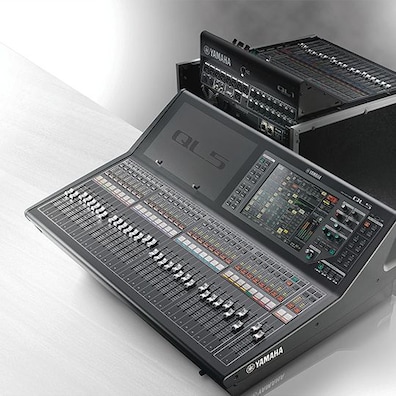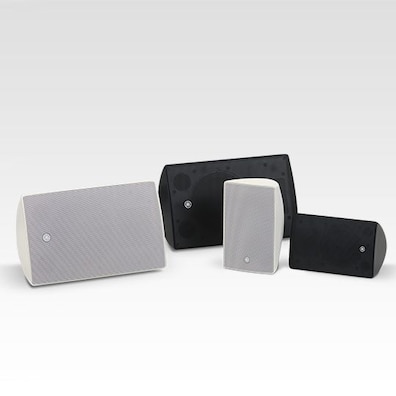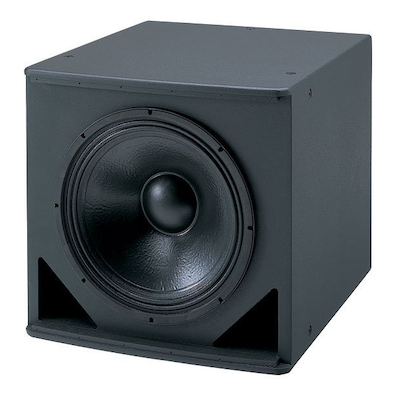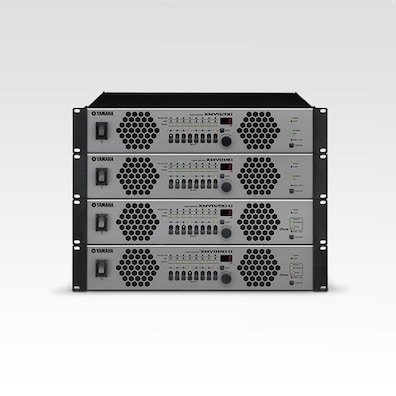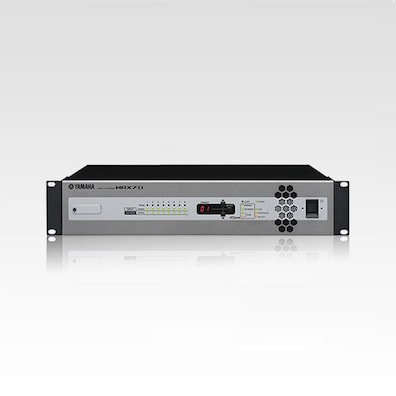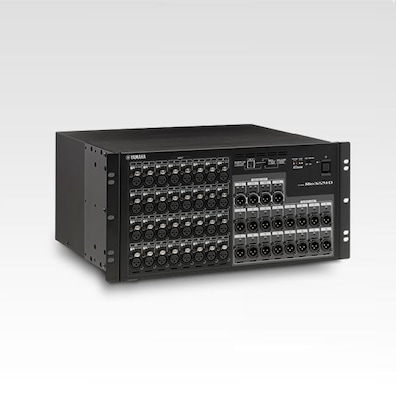Chapman Theatre Gets Yamaha Active Field Control
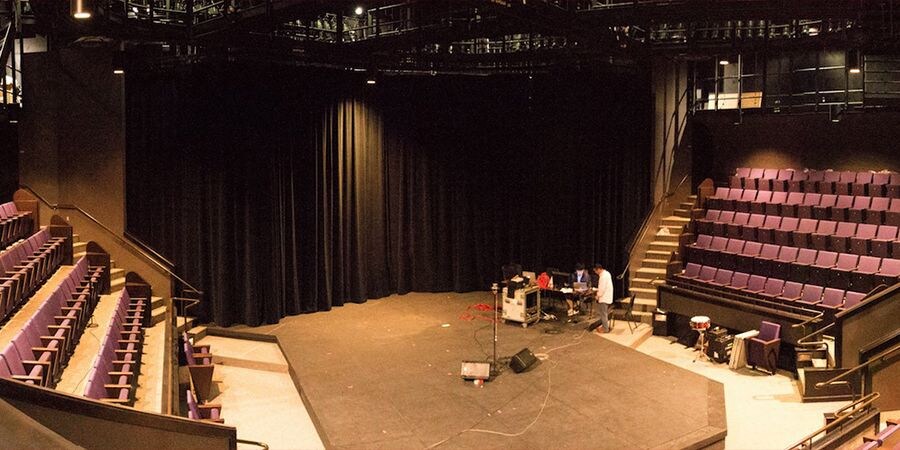
PART1
On the SVC Podcast, Contributing Editor Bennett Liles talks with Rob Barton of McClelland Sound about the complete sound system installation in Kansas State University's Mark Chapman Theatre. The centerpiece of the project was a Yamaha AFC3 active acoustics system. Rob details the design, planning and installation of this and much more sound gear to allow the venue to accommodate a wide range of events and seating arrangements.
Notes:This interview had been done dividing in two days.
Bennett:
This is the SVC Podcast from Sound & Video Contractor Magazine with Rob Barton of McClelland Sound. For more information check out the show notes and product links for this podcast and others at svconline.com.
Yamaha's AFC3 is the latest version of their variable acoustics system using Active Field Control. When Kansas State University renovated their Mark Chapman Theater they called in McClelland Sound from Wichita to install and commission it as part of an even bigger project. Rob Barton is here to let us know how it went. That's coming up next right here on the SVC Podcast.
Rob, good to get you with us today for the SVC Podcast. We've had dueling schedules for a while now but we both got a chance for it today so it's great we could do this one. Coming to us from Wichita, Kansas at McClelland Sound. This was a Yamaha AFC3 installation in the Mark Chapman Theatre at Kansas State University.
Rob:
Yes.
Bennett:
I think this was part of a general renovation that was going on. Your outfit is certainly no newcomer to AV projects. There's a mighty rich history there so give us some of the story on McClelland Sound.
Rob:
The original original business was actually McClelland and Mogle and it started as kind of a partnership between two guys. And it started, oddly enough, revolving around Kansas State University. Originally it was building radios and McClelland and Mogle split off at one point and basically in 1928 was when we were really founded. So this is our 90 year in business and the third generation of family ownership. We currently employ about 20 people full time. We're based out of Wichita, Kansas, but our sales territory is all of Kansas, all of Oklahoma, parts of Missouri, Nebraska and Colorado. We pretty well serve houses of worship, K-12, higher education, corporate, hospitality, government, industrial. And stuff that we normally engage in regularly are performing arts venues, of course – auditoriums, theaters – stadiums and arenas, cathedrals and church sanctuaries of sorts. We have done several casinos and of course we get calls for general paging and public address type stuff. So we pretty well cover the whole gamut. I think about 15 years ago when we started taking on video and control and five years ago or so when we started taking on theatrical type lighting and projects like that. So we've expanded to the whole AVL type gamut of sound, video, lighting control and acoustical design.
Bennett:
A lot of tradition there and that company has seen a lot of changes in technology over the years. Kansas State University called on you for a very comprehensive project at their Mark Chapman Theatre.
Rob:
It was a very technical job, of course, and really required a lot of organization and a lot of coordination between theater staff and what the physical parameters were of the room. It was nice to be involved in it. We had done another theater of K State's I think in 2015 or maybe 2016. And that one was actually a consultant designed project and they were so happy with the customer service they decided to cut out the middle man and directly hire us to do the sound remodel of this theater. It was a very long process starting in 2015 and working through different budgets and different fiscal years and all that fun stuff that the public sector has to go with. And finally a donor decided that they were tired of waiting and they wanted to make some things happen. So that was what really pushed the project forward and also allowed the small other remodel to happen as well.
Bennett:
And when the money's there, go for it while you've got it. A Yamaha AFC3 variable acoustics system is what they wanted to deal with the very diverse needs of this flexible venue. They've got a huge variety of shows in this place with flexible seating and that required some pushbutton creativity on the acoustics.
Rob:
The theater people, their big focus is not so much the reinforcement of the performers, but they do a lot of spatial effects in the theater and their need for that far exceeded any other theater that we had ever worked with. So the initial thought was okay, well, we could probably do some sort of fixed LCR over the three seating areas and give them a bunch of portable jacks and they could just plug whatever they needed wherever they needed and use the patch base, which they had been accustomed to since the 80's, I think, when the original system was put in then. Then we started thinking about it some more and this is a really strange sounding room. The natural reverb time is maybe a half second, maybe 6/10 of a second and it just didn't really feel like a theater or a traditional performing arts space where you would go in and just project unamplified. And so that's when we thought of the variable acoustic type systems. There's a lot of those on the market. And we decided Yamaha because it seemed to me that the system could be the most integrated through them as a manufacturer. And it also seemed like their hardware was much more up to today's technical standards versus a lot of the competition that people are familiar with.
Bennett:
Yeah, I think I should have called you before all this happened and asked you to hold off till I could be some stock in Yamaha speakers. Let's see, you've got a lot of them in here. I looks like 60 or so VSX8's, IS1118 subs, of course Yamaha amps, Yamaha mixer. Seems like you had a little bit of a challenge on where to put the amplifiers.
Rob:
The initial building, it was not a theater. I believe it was actually a gymnasium if memory serves me correct. And a million years ago it was lit on fire by an arsonist and sat vacant. They decided okay, we should tear this down and there was a big protest and decided okay, we can make some classrooms out of this and we can also make performing arts space out of this. So really the only thing original to the building was the exterior walls, but because they had to build it out within those confines they had to get very creative. So the room that all the hidden equipment – it's physically under the seats and because of course the seats rake up the ceiling actually rakes up within this room. So on the low it's about five feet tall and it slopes maybe to seven if you're lucky, and maybe four foot by eight foot footprint. So there's not a lot of room in there and with all of the new equipment it was literally going to become a pizza oven because we calculated around 20,000 BTU of heat with the new equipment being installed and they didn't really like the idea of selling pizza at the theater. But I thought it would have been profitable. So they had to put in a split level. They had to do some electrical rework to get additional service in there. So now we've got 80 channels of amplifier and a 24 RU rack. In addition to that we've got the AFC head-ins and some network switches and UPS's and things like that for power conditioning and another 24 RU rack. So it just barely fit in there and actually so much that they had to move the existing electrical panels to the outside of the wall of that room because, of course, you've got to be three feet away from electrical panel. And so they had to move it to the outside wall in order to meet code, so that's how tight the room was.
Bennett:
And you installed the main house mixer as well. I think that was a QL5.
Rob:
QL5, yeah. Doing the system Yamaha front to back really allowed for some very tight integration between any of the digital routings that we would be doing, the wireless mics that we would be doing, and made it really easy to support and monitor because the QL, as you know, when you add specific Dante devices they have profiles in there of a lot of common Dante devices such as the AFC equipment and the MRX7 and wireless microphones and things like that. So it really made the Dante routing easy if they need to change that on the fly with the console and allow for them to maintain physical patching to everything but do the virtual patching through Dante routes on the board to where if they want to do 3D effects of speakers it's clearly labeled in there exactly what this direct output goes to so it made it really easy for them to operate after the installation. Any time there is a spatial effect or a locational sound within the theater they're easily able to decide where that goes and intuitively get it from Point A to Point B.
Bennett:
One of my favorite features on the whole QL Series is the integrated Dugan automixing. I loved when they put that in those. I just thought it was not just something tacked on but incredibly useful and from the most solid name.
Rob:
Yeah. It really opened up the possibilities of the console format mixers and the ability to maintain a low number of open microphones so that you could increase the headroom that you're able to get out of the system and not run into feedback problems. And of course with the theater there are a lot of times you might have 24 headsets on performers and a stage full of performers, but it's very rare that all 24 people are going to be talking at the same time. So of course the people of the past would maybe try to actually gate them on a digital console and the dynamic range of the theater really doesn't allow for standard dynamics processing, at least in the gate world, because sometimes things are whisper quiet but you don't want to lose that reinforcement out of the system. And then of course other times they're singing and a lot of those guys, they know how to project and they can really wail. So dynamic range of things in the theater needs to be really solid and allow for very flexible inputs. And I think the automixing really solves a lot of problems that a lot of digital consoles had in terms of flexibility and allowing some automation of your open microphones, especially when you've got things like dialogue and speech between performers on stage.
Bennett:
Really saves the day in unscripted formats. Now with this complex a system how did you manage not to exceed the existing equipment's routing capacity?
Rob:
That was not so much the Achilles heel, but that was something that was always, always on our minds. We had a really, really elaborate spreadsheet because obviously putting a Dante network in CAD is not terribly straightforward. So in this system we have around 240 Dante inputs and 320 Dante outputs. So we made a spreadsheet and put formulas in there and conditions in there to where everything would get nice, pretty colors and things like that. That way we would know that if we duplicated two inputs to a single output or if we exceeded the actual chipset's capacity, you know some of them are 64 channels, some of them are 16 channels. So if we exceeded the chipset's capacity the whole device within the spreadsheet would go red and we could try to reroute things through other summing buses and things like that to where we could stay very organized and be very diligent with the hardware limitations that are in place. And I would say we are generally at around a 95 percent limit of what the hardware will handle as installed, but the good news is that if they decide that they need to do something in the future and they need to exceed, in a lot of cases, that 64 channel limit there's still plenty of card slots and things like that available so they can add new cards. And if technology changes and they need a different digital audio bus it's pretty safe to assume that Yamaha will come out with a card slot for that and allow them to expand well into the future.
Bennett:
Another big advantage in staying with the same manufacturer through the job when it comes to futureproofing everything. Next week we'll get into more detail on the mics, intercom and control system at Kansas State University's Chapman Theatre. It's Rob Barton with McClelland Sound in Wichita. Looking forward to hearing some more about it.
Rob:
Thank you very much, Bennett. I appreciate your time.
PART2
On the SVC Podcast, Contributing Editor Bennett Liles continues his conversation with Rob Barton of McClelland Sound about the complete sound system installation in Kansas State University's Mark Chapman Theatre. In addition to the Yamaha AFC3, the crew installed a Clearcom intercom system, Shure wireless mics, Extron touch screen control and a Yamaha QL5 main house mixer.
Bennett:
This is the SVC Podcast from Sound & Video Contractor Magazine with Rob Barton of McClelland Sound. For more information check out the show notes and product links for this podcast on svconline.com.
Taking full advantage of a renovation at Kansas State University's Mark Chapman Theater, McClelland Sound in Wichita came in with new mics, a new main house mixer, Extron control and variable acoustics with Yamaha's AFC3 system. Rob Barton of McClellan Sound is back to finish the story on how they completely refitted the place. That's coming right up on the SVC Podcast.
Rob, good to have you back this week for more on the Mark Chapman Theatre project at Kansas State University. Big project with a Yamaha AFC3 active acoustics control system. Very complex setup with 60 main house speakers all set up to work right together and vary the acoustics for such a wide range of activities there. Crew communication is got to be crucial on these shows so what did McClelland Sound install for their intercom?
Rob:
Yeah, so you know, it's 2018 and everybody loves their cell phone. However, in the theater that really isn't a good medium. Obviously the lighting of the screen is very distracting and there's a lot of people who do it because they simply don't have adequate intercom systems. These guys have relied on Clear-Com for over 30 years in use and we weren't going to change that. So we actually installed in this instance a hybrid wireless and wired Clear-Com system. Since the building was only undergoing a light remodel getting conduit and wire to some of the new locations that they really wanted to have really would have increased the cost and the timeline of the project beyond the original parameters that they had set out. They did have a lot of existing wired Clear-Com jacks and so we refreshed all that stuff, but where there were some limitations of getting wire from Point A to Point B, again around the parameters of the project, we installed the wireless Clear-Com system and that allowed them to have intercom wherever they would need to be. And in this theater, since it's a thrust stage, they really don't limit themselves to the stage itself. So they really need to have the ability to run the production anywhere in the physical building and the Clear-Com system, the wireless system, knocked it out of the park. So anywhere where there's not a physical jack and anywhere we couldn't get a physical jack, such as the ticket office for example, we gave them the wireless body packs and they're able to really flexibly operate the intercom system and really take the leash off the technical staff where needed.
Bennett:
Well, one of the more creative aspects to this, once you've pulled all the wire and made all the connections, is to take as complex a system as the Yamaha AFC3 and make it all very simple to control. I think there's an Extron TLC Pro 521M control panel in there somewhere. Does that control the AFC system?
Rob:
Absolutely. One of the things that you want to do, of course, with variable acoustics is vary the acoustics. So yeah, we do have an Extron panel located in the sound booth. It actually serves a lot of functions. It will control the AFC presets that we set up. I think we set up maybe five presets as well as actually a live adjustment to the reverb time. So they're able to quickly jump around for different settings, but if I do have to do something on the fly they can pretty well ramp it up within a few seconds. So if they need an effect – and explosion or something – it allows them to make that kind of adjustment quickly and intuitively rather than having to actually know how to log into a DSP and potentially edit the programming, which we certainly wouldn't want that to happen anyway. It took a long time to commission that system. And so beyond controlling the AFC it will control program sources such as the CD players and announcement microphones so the transport of the CD player and the volume of the announcement microphones. It will also do routing throughout the theater space so if they want to send a CD player to the theater proper in between different changeovers or parts of a play, things like that, they're able to route the CD player there. But if they don't want it there they can route it to the lobby, they can route it to the other places within the theater. And beyond that it allows them to kind of split the system so if they only want to have something going on in the lobby they're able to make that route. So they're able to do that with the actual AFC overhead microphones, send those to different areas. They are able to do that with the CD players, the announcement microphones and the theater chime pretty flexibly and intuitively without having to worry about patch phase and a bunch of transformers and things like that. They just push a button and send it out there. And then other than that we actually control the theater chime with a touch panel. So they've got the ability to load different wave files on a compact flash card or they can FTP into it if they want to and set up a few different chimes for a show.
Bennett:
You know, I meant to get to this last week when we talked about the Yamaha AFC3 variable acoustics system. When you went into this project, how much experience did you have in installing these Active Field Control systems?
Rob:
None actually. A lot of hopes and dreams.So this was our first AFC system. Hopefully it's not our last. We love it. I mean everybody in the room was pretty well grinning from ear to ear after we finished up the commissioning and demonstrated it for a lot of the theatrical staff and performers. So we're pretty well constantly looking for future opportunities. Obviously not every theater is a potential opportunity for this kind of technology and this type of system, but the ones who need a lot of flexibility but also have a very controlled acoustical space are a great candidate for this type of system. Worth noting maybe we have experienced a lot of the competing technology and it does what it's supposed to do, but the trick of that is typically it's a stand-alone system that really only reinforces the room. In this instance, since we have the dual use of the system – have the AFC system as well as the actual PA for the room – the integration between the Yamaha head end and the AFC portion of the Yamaha head end really allowed us to do anything that we need to do with this system and anything that you would typically expect out of a front of house system in a performing arts space.
Bennett:
And a big part of that of course is mics so what type of mics did you include in this setup for them?
Rob:
Since this is what they call a dual AFC system this is an array of eight of the Audix SCX1C, which is the cardioid model. And we actually bought them in matched pairs just thinking that that would help make sure the frequency response of each of those was identical throughout the stage plot. Generally they use Omni directional mics on a lot of the instances, specifically when they're trying to get reverb rather than early reflection. They usually do cardioid for early reflection, but this since system actually served as the AFC functionality as well as the house PA and the theater affects system, the cardioid elements actually gave us a little bit better pickup in the front and allowed us to run the system at a little bit higher SPL. And so if they have performances and they really need a dynamic range we're able to ramp it up and not run into any weird artifacts or even worse, feedback.
Bennett:
And for the mics the performers use onstage you went with a Shure wireless system. I might think that with all of the stuff you had to put up above the house on this that setting up the RF antenna system for the mics might have gotten a little bit tricky. Which Shure mic system did you use?
Rob:
We went with Shure ULXD primarily because of the Dante integration as well as the control and the monitoring integration built into the QL5 screen. So obviously we're able to monitor RF and battery life directly off the console, which I think is great. And it's really just a fine detail of the workflow. Yeah, of course I can look at a rack full of receivers and determine what's going on if I have an issue, but it's right there on the screen. It's in my face. And it really allows a more consolidated workflow to make a production happen. They actually had quite a few channels of UHF-R, but a lot of them were actually in the 600 MHz band, which as you know was recently sold off in the FCC upgrade. So they do still have some that are in the 500 MHz range, but they're also shared amongst a couple of the performing arts venues on campus and they just wheel them in as needed. So what we did is we actually provided a connection panel and an antenna distribution amplifier so they could take all of their existing wireless and just plug it into the connection panel and get into the house RF system. For the antenna we did the RF Venue DFIN which is a wide-band antenna. So they're able to use any of the wireless that they already owned but obviously use the new channels as well and likely any channel that they're going to rent if they exceed the capacity of what they already own. And since the theater will often have performers entering from backstage or the lobby, or maybe they even have an actual event in the lobby where they need one of the wireless microphones, the combination of the LPDA and the di-pole elements on the RF Venue DFIN do a really good job covering the theater proper as well as the extended venue for a lot of flexibility in how the polarized RF signals actually arrive. We really think the RF Venue products have been huge problem solvers, especially in theater and complex RF environments so we use them as frequently as it makes sense. And we actually purposely tried to have poor microphone etiquette, so we took one of the hand-helds, walked all four levels of the theater space, cat-walked all the way to the basement while covering the antenna on the transmitter and just walking around trying to get dropouts, trying to hug the thing and get it to cut out and we actually didn't have a single dropout, including in the basement. And we were really impressed and were a huge advocate for some of the technology that RF Venue is bringing to the market. Also because of the existing portable wireless that they wheel from venue to venue around campus and other potential RF sources near a college campus, we actually used the Wireless Workbench software for frequency coordination which made it really quick and easy to deploy to the 24 channels of inventory that they had existing, plus the eight new channels that we installed. So it allowed us to scan the environment and with the click of a button pretty well deploy it and then make sure that there weren't any anomalies or anything like that during the setup process. So really big advocate of doing your homework when it comes to RF because nothing is worse than white noise and static at 110 dB for an event.
Bennett:
Oh, well. That certainly gets everybody's attention on the sound system.
Rob:
Oh, yeah. It will wake somebody up. Right. Yeah.
Bennett:
The place has a thrust stage and the seating has to be flexible. I was thinking about one thing on this. I don't know if they do a lot of stage plays in there but would that be a significant challenge for the AFC3 system?
Rob:
No. So the seating in the room and the architecture, the only thing that made it difficult to do is an on-access measurement from each speaker. Mostly just around the perimeter of the building itself, but a lot of the speakers around the perimeter aren't actually on axis with any listeners but they're still required to actually fill the room with sound and process the AFC system to extend the reverb time. That was really the only challenge for any of the seating. The steel above the catwalk, if you're not careful, just walking the catwalk you will hit your head on it. So for probably 90 percent of the speakers we could just bring all of them up to the catwalk and start installing them from the catwalk itself, which was really handy. The other 10 percent or so we had to get creative and we did bring some scaffolding into the venue. Of course this would be where there is no catwalk so it was easy to get free and clear access to install the speakers there. They're basically in a grid pattern on eight foot centers or so. It made it actually pretty easy to install the speakers and one of the biggest advantages to the speaker that we chose from Yamaha – the SX8 – was that the low profile of the speaker, we were actually worried about (1) interfering with the lighting plot and causing shadowing and (2) people running into the speakers, hitting their head on it and completely ruining the aiming of everything. But they actually offer a pendant mount bracket which made the speaker even lower profile so they actually fit up above the I-beams of the theater. So it was a pretty good install and nobody's going to hit their head on the speaker. They'll hit it on the I-beam first.
Bennett:
There was a lot to get working and coordinated on the project, the wireless mic reception, the intercom and the Yamaha AFC3 system but you got it all in and done so now you do have AFC3 experience so what have you got coming up for McClelland Sound?
Rob:
In 2017 we were pretty well dominated by higher education projects for both performing arts and classroom multimedia. We're pretty well forecasting an equally busy 2018, but we're actually thinking it's going to shift back to sports stadiums and houses of worship. So I think we'll certainly be talking with you guys again probably after the summer, but a lot of large format football and basketball arena systems are what we're thinking are coming up.
Bennett:
Well, that'll certainly be a different kind of project but it was great hearing about this one. I love to hear about variable acoustics systems because of the creative aspect to the design and the control of it. Rob Barton from McClelland Sound in Wichita, Kansas and the Kansas State University's Mark Chapman Theatre. A brand new Yamaha AFC3 system and all the other things. Thanks for getting with me about this one, Rob.
Rob:
You're very welcome, Bennett. Thanks for having me on the show.
Related Products
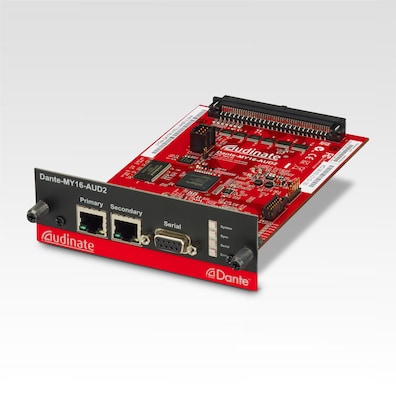
DANTE-MY16-AUD2
16-Channel Dante Network I/O Card
Location
Manhattan, KS ,USA

